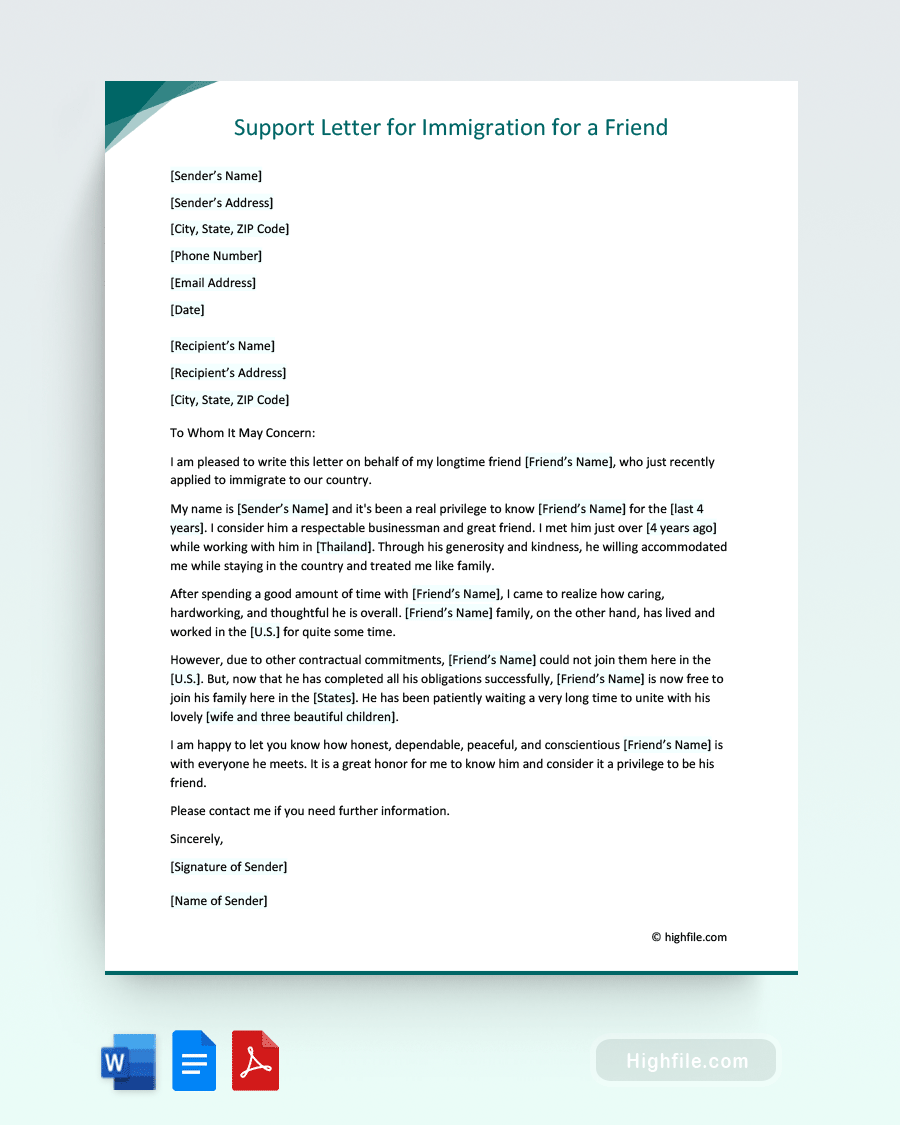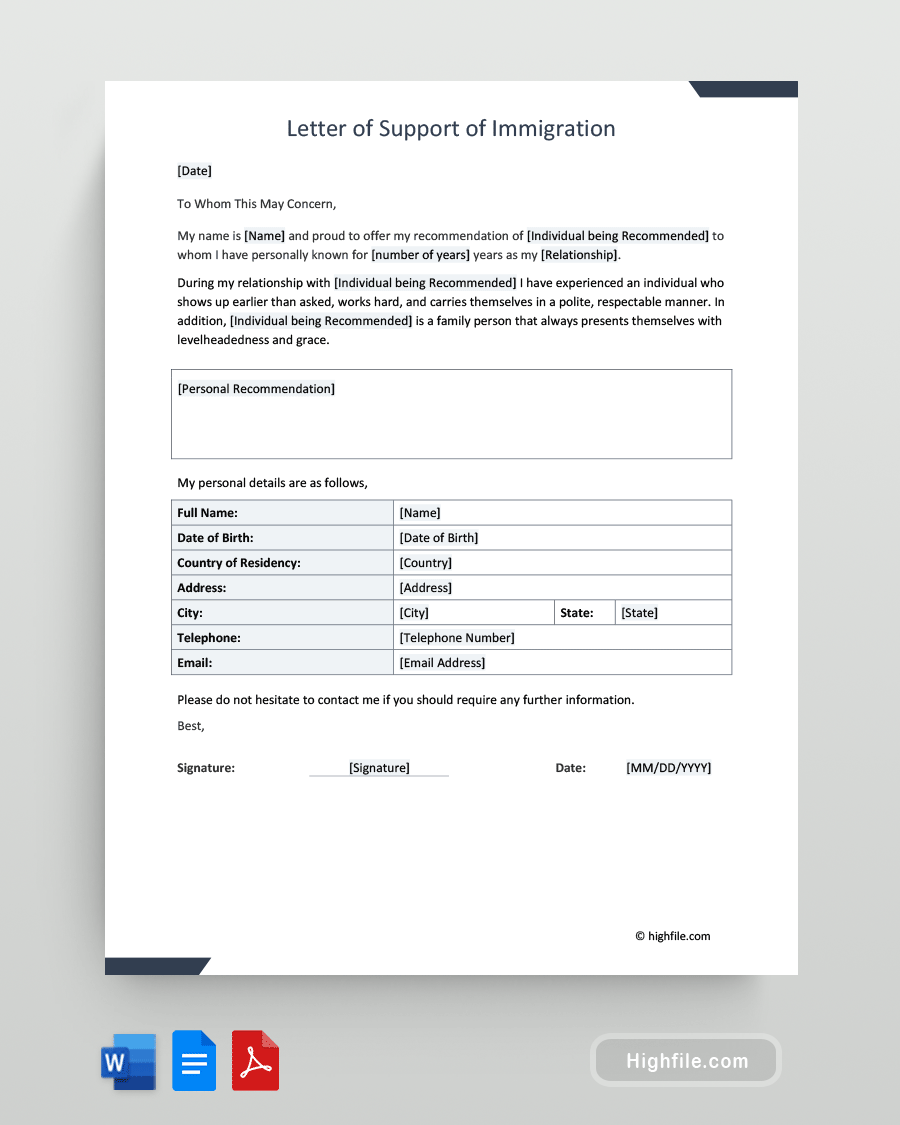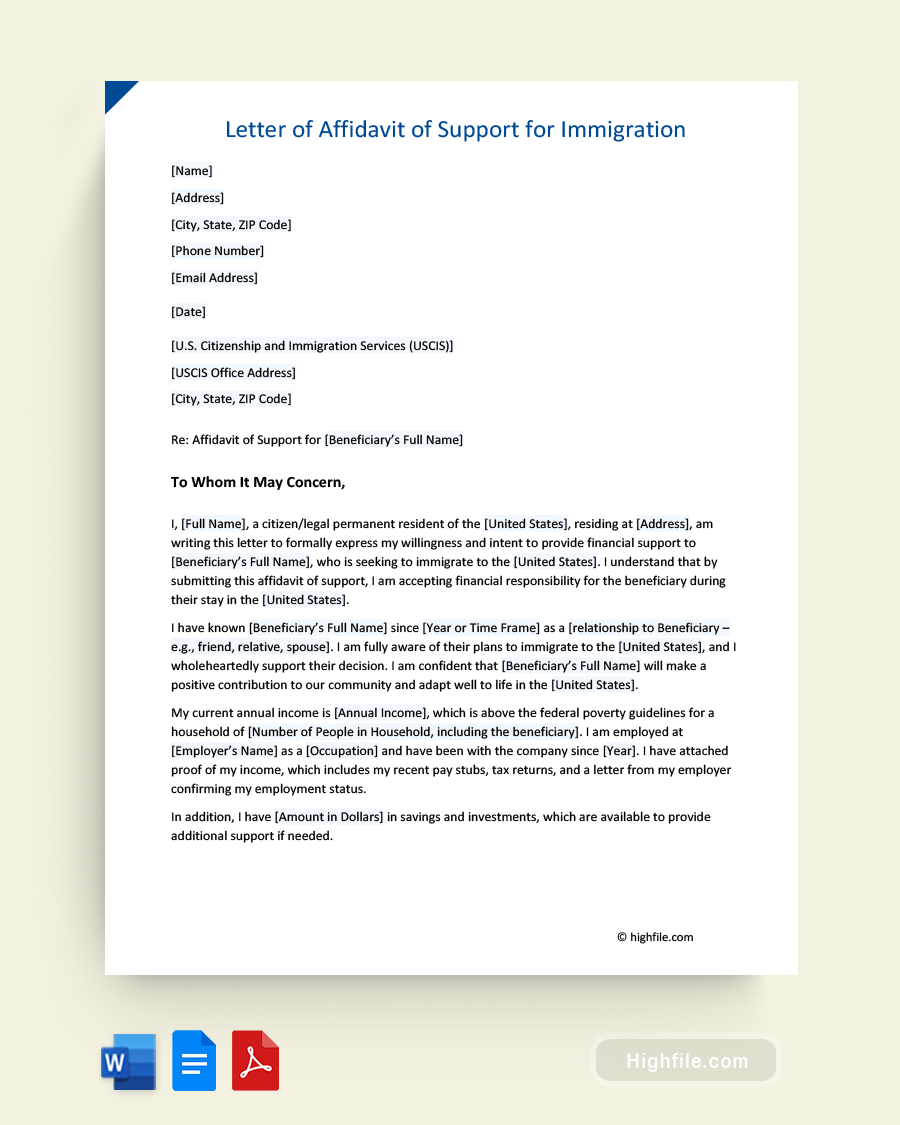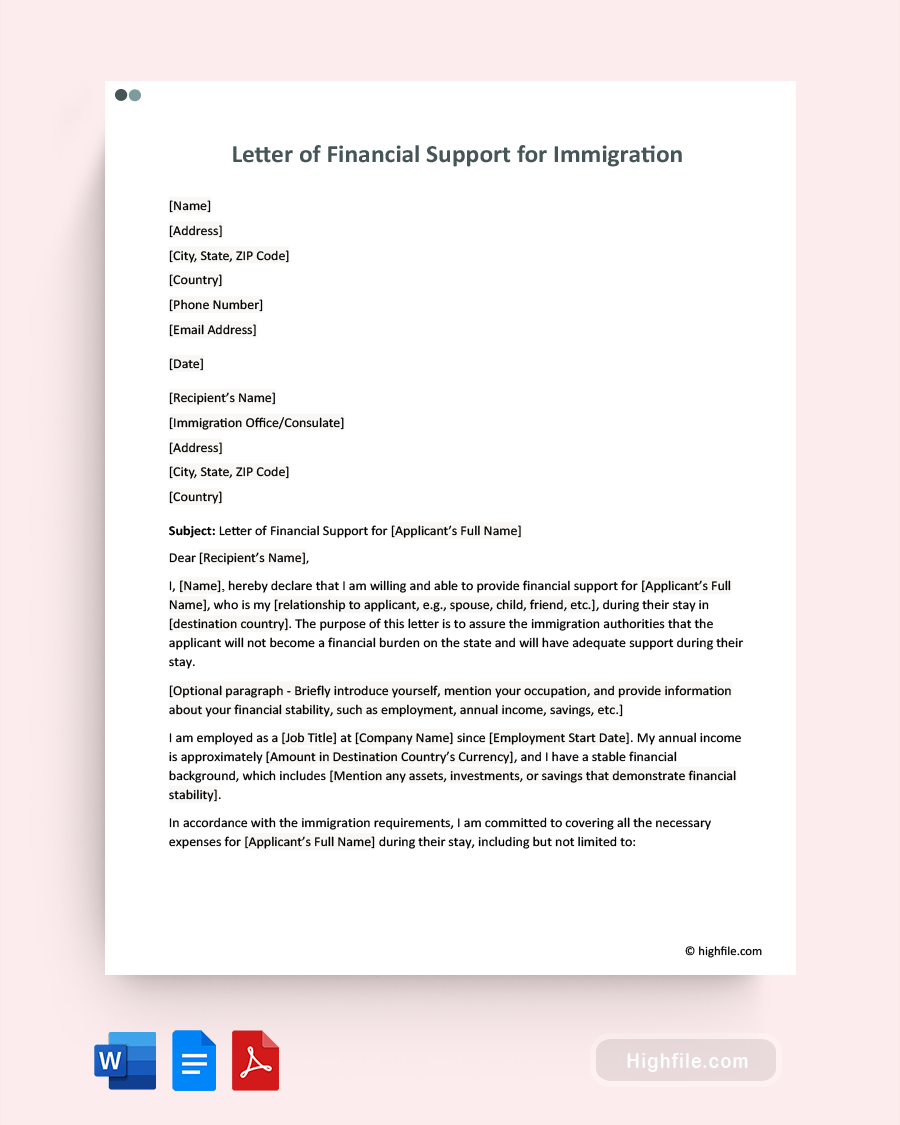When a friend or family member goes through the immigration process, it can be stressful and overwhelming. Fortunately, an Immigration Letter for a Friend can offer a glimmer of hope and provide much-needed support. This document is a powerful declaration of endorsement, demonstrating the writer’s relationship with the individual and their willingness to assist throughout the immigration journey. The requester can benefit significantly from a well-written endorsement letter highlighting their ties to the United States and strengthening their case. The writer should always use a template to compose this crucial document to ensure that all necessary information is included and the letter is correctly formatted. The success of an individual’s immigration application can hinge on the quality of their Immigration Letter for a Friend, making it a crucial document for both the requester and the writer.
What Is an Immigration Letter for a Friend?
An immigration letter for a friend is written by someone who knows an individual seeking immigration status in the United States. The letter verifies the applicant’s character, work ethic, and overall suitability for immigration status. The letter may include details about the writer’s relationship to the applicant, how long they have known each other, and any personal experiences demonstrating the applicant’s positive qualities and contributions to their community. These documents are an essential component of an applicant’s immigration application, as they can provide additional evidence of their eligibility and help to establish their credibility.
Why Is Immigration Letter for a Friend Important?
An immigration letter for a friend is a crucial document that helps an individual seeking immigration status in the United States. Here are some reasons why this type of letter is important:
- The immigration letter for a friend can attest to the applicant’s positive character traits, such as honesty, responsibility, and work ethic.
- It can provide details about the applicant’s circumstances, including their family ties and reasons for seeking immigration status.
- When the letter is written by a credible and reliable source, such as a friend who is a U.S. citizen or lawful permanent resident, it can add credibility to the applicant’s application.
- This useful document can be used to support other evidence of eligibility for immigration status.
Essential Elements of Immigration Letter for a Friend
Writing a compelling Immigration Letter for a Friend requires certain essential elements to be included. Here’s what you need to know:
- Writer’s Name and Contact Information: This should be included at the top of the letter to identify the writer and provide their contact information.
- Recipient’s Name and Contact Information: The name and contact information of the recipient, such as the immigration officer or consulate, comes next.
- Subject Line: The subject line should clearly state the letter’s purpose, such as “Letter of Endorsement for [Friend’s Name] Immigration Application.”
- Formal Salutation: Begin the letter with a formal salutation, such as “Dear Sir/Madam” or “To Whom It May Concern.”
- Body of Letter: This is the main section of the letter where the writer should include details about their relationship with the friend, their character, and any emotional or financial support provided.
- Formal Closing: End the letter with a formal closing, such as “Sincerely” or “Respectfully.”
- Supporting Documents: Any supporting documents, such as copies of the writer’s ID or passport, should be included with the letter.
How to Write an Immigration Letter for a Friend
Writing an Immigration Letter for a friend can be a daunting task. Fortunately, with some guidance and a high-quality template, you can create a powerful document that will help your friend or family member on their immigration journey. Here are the key steps to follow when composing your letter:
- Gather Information: Before you start writing, collect all relevant information about your friend or family member, including their name, address, relationship to you, and their immigration status.
- Choose the Format: Decide on the format of your letter, such as a personal letter or a formal letter addressed to a government agency.
- Formal Greeting: Start your letter with a standard greeting, such as “Dear Sir or Madam” or “To Whom It May Concern.”
- Introduction: Introduce yourself and your relationship to your friend or family member. Include how long you have known them and in what context.
- State Purpose: State the purpose of your letter, which is to endorse your friend or family member’s immigration application.
- Details: Provide details about your friend or family member’s character, accomplishments, and why you believe they should be granted immigration status.
- Emotional and Financial Support: If applicable, discuss any emotional or financial support you have provided or will provide to your friend or family member.
- Community Involvement: If your friend or family member has been involved in community activities or volunteer work, include this information.
- Summary Endorsement: Conclude your letter with a summary endorsement stating that you strongly support their immigration application.
- Formal Closing: End your letter with a formal closing, such as “Sincerely” or “Respectfully.”
- Edit: Before sending your letter, edit and proofread it for errors or mistakes.
FAQs
The best way to submit an immigration letter for a friend to the relevant authorities is as part of the applicant’s overall application package, either in hard copy or online, depending on the application process. If the letter is being submitted as a hard copy, it should be printed on high-quality paper, signed by the writer, and sent in a sealed envelope. If the application process requires online submission, the letter should be scanned and saved as a PDF file before uploading to the appropriate website.
There are potential red flags to avoid mentioning in the letter. If the applicant has a criminal history, it’s generally best to avoid mentioning it in the letter, as it could raise concerns about the applicant’s suitability for immigration status. Any mention of the applicant’s involvement in illegal activities, such as working without authorization or overstaying a visa, should be avoided. Financial issues, such as unpaid debts or outstanding taxes, could raise concerns about the applicant’s ability to support themselves. Health concerns may raise concerns about the applicant’s ability to support themselves and their potential burden on the healthcare system.
Discussing your friend’s professional or educational achievements and how they would benefit the new country can be a valuable addition to your endorsement letter. By highlighting your friend’s skills and accomplishments, you can help to establish their value as potential immigrant and demonstrate how they can contribute to their new community. For example, mention your friend’s advanced degree in a high-demand field or their extensive experience working in a specific industry.
Key Points
An Immigration Letter for a Friend is used by individuals seeking to assist a friend or family member with their immigration process. This letter serves as a declaration of endorsement, detailing the writer’s relationship with the individual and their willingness to provide support during their immigration journey. The requester benefits from having a well-thought-out endorsement letter to strengthen their case and provide evidence of their ties to the United States. The writer should always use a template to compose this document to ensure that they include all necessary information and that the letter is formatted correctly. A well-written Immigration Letter for a Friend can be a critical factor in the success of an individual’s immigration application, making it a vital document for both the requester and the writer.







